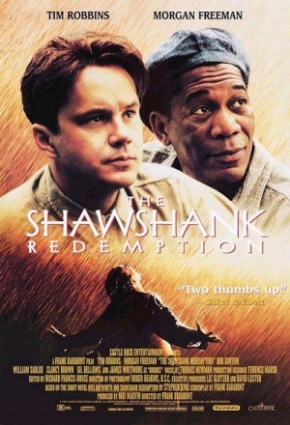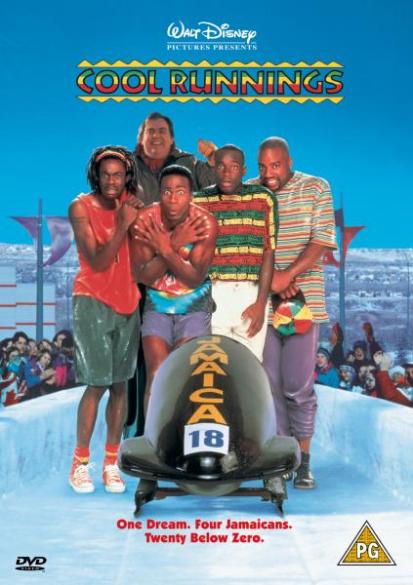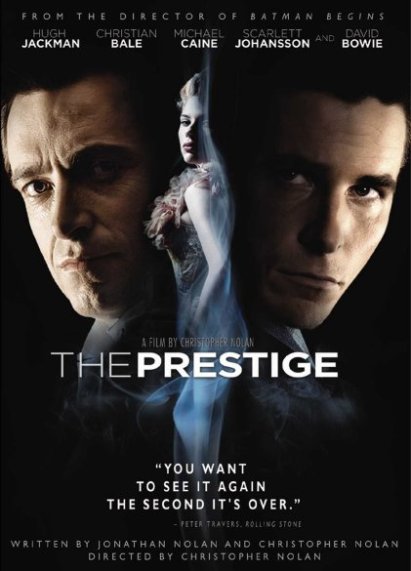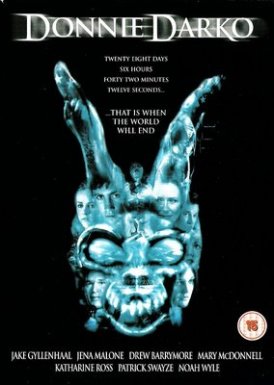For a film to tell a story, it has to be crafted from many different elements of film techniques; and these techniques have to have an appearance in the first few minutes in order for the audience to wish to continue watching. Therefore, the opening scene in any film, is the most crucial part, whether it be the most favourable or not. It is imperative that enough information is given to us for us to understand the concept of the story almost straight away, whilst enjoying it without being overwhelmed. A film that efficiently demonstrates this is ‘Little Miss Sunshine’.
The opening scene in ‘Little Miss Sunshine’ tells us who the characters are going to be and allows us to hazard a guess at what the story is going to be about in the form of a montage. A way the audience can know a little about the characters and plot, before they begin speaking, is by mise en scène. The setting of a scene can convey valuable amounts of information about the two; whether it be props, costume, lighting, expression, or other techniques. The mise en scène is intended to do exactly that, as quickly and effectively as possible. We are presented with a variety of environments, differing between a living room, a stage, a bedroom, a bathroom, a car, and a hospital. All of which giving vital clues about the characters; e.g. we learn that the character in the hospital, Frank, has mental health issues, which could be guessed just from the setting. The colour and lighting remain a similar tone throughout, except for when we are introduced to Frank, where both become dull and grey, establishing that we are supposed to focus on that particular area and conveying he is not as well and content as the rest of the characters. This idea is used for costume too, except it is exaggerated for emphasis and humour. Dwayne has dyed his hair black and wearing scruffy clothes, and Olive is wearing a colourful outfit with accessories, both stereotypically stressing their ages and genders.
Adding to the mise en scène, the setting would not be as important without cinematography underpinning it. That is what causes the audience to appreciate the surroundings as well as the characters. To start this off, we are met with a close-up shot of a young girl. The shot is in shallow focus, framed just between her forehead and mouth, purposely drawing us to just the character’s eyes. As she is evidently young, and the shot is concentrated on her eyes, I believe we are meant to feel an empathetic connection as her expression is child-like, curious, and innocent. At this point, I began to think this character was possibly feeling alone. There is not a lot of attention given to her environment, giving the impression that she was absorbed in her own world. ‘When you get close to the actor with a fairly wide lens, it creates a slightly artificial feel which in this case conveys a sense of distance between Amin and the world around him.’ (Oppenheimer, Shattered Past, 2013).Furthermore, the television show she is watching reflects on her glasses and then the audience watches it from her perspective. This puts us on a personal level with the character. After this scene, we are introduced to Olive’s father, Richard. The camera angle is directed up at him, already telling us that he is going to be the most domineering character. Partnering this with the fact that he is on a stage and public speaking, it is thought that he is of big importance. Especially since it is filmed in fairly high contrast lighting in comparison to Olive’s scene. However, the scene then ‘deflates’, as the camera then shows the audience who he was talking to in low contrast lighting, and no particular thought provoking framing. It illustrates a small classroom with minor attendees, indicating that our presumptions were completely incorrect. A teenage boy is then presented, doing exercise in his room. The camera differs between deep and shallow focus depending on when the dumbbell comes towards the screen. This is an interesting effect, as it is like it is controlling our vantage point for us, as if we were on top of the dumbbell. The progression of Dwayne’s scene then uses similar cinematography techniques, alternating between watching him and being him. Shallow focus is then used again, but this time concentrating on a new character’s hands, intentionally directing our attention to what he is doing rather than what he looks like. Up until a certain point, all of the characters are represented as quite secluded and immersed in an activity. Opposed to this pattern, Sheryl is then introduced. To me, she is not portrayed like the others. She is shown as being really anxious, as the shot consists of a burning cigarette with her shouting before we even see her face. The framing, camera angle, and rickety filming also make it seem as though she is sitting next to the audience, like they are in the car understanding her mood. This describes the possibility of her being the character that holds the rest together, as she is the only one not doing her own thing. Uncle Frank is also introduced to us through her perspective, rather than having his own montage like the others. This can be seen as him not being able to be on his own, so is recognised as a pair with Sheryl. The cinematography contrasts between seeing him through the door from the outsider’s standpoint and as though we are watching him from a distance. But never from his outlook which is quite interesting, as it poses the dark idea that it is not one the audience would want to see, taken from the condition that we are presented with. The most significant knowledge the cinematography gave to us, was that each member of the family is alone in their own way. There is a shot for every character, other than Sheryl, where the person is by themselves surrounded by almost empty space. The focal lengths are wide angled in order for us to see more of the props than the character, conveying them as being small and isolated.
The sound used in the opening scene is simple but effective. For the majority, the only diegetic sounds you hear are the television right at the start, the quiet placing of objects and people’s voices. But mainly, we pay attention to the relatively melancholy, non-diegetic music playing throughout the sequence. I find it particularly clever as it actually controls the timing of the introductory scenes. Every time a new character comes onto screen, a new instrumental riff is added to the song, so it is gradually building up through the story progression. After the film title rolls on, the music fades out as if to suggest the audience needs to pay attention at that moment, because this is where the story is going to start. In addition to this idea, I think it could be a possibility that the music fades out to express the emptiness of Frank’s state. Like the common technique of making the music louder when a character puts on headphones to get inside their head, but backwards. There are only two voices we hear at the start, both highly contrasting. One is of Richard, who speaks calmly and low in pitch; and Sheryl, who is shouting and speaking fast. Both are American, but neither have particularly well educated nor unrefined accents, so we assume they are from average backgrounds.
Editing is one of the most indispensable techniques in a film, as it determines how the audience sees the story at the same time as keeping their attention. ‘Editing is probably one of the closest processes to directing.’ (Roth and Addison, The Wonders of Editing: an Interview with Mathilde Bonnefoy and Tom Tykwer, 2011). There isn’t particularly a large diversity of methods used in the opening sequence, as most editing techniques I am aware of are used for interactions between two or more people, but this does not actually happen at all until the very end of the opening scene, where only shot/reverse shot and the 180 degree rule are used within a conversation between Sheryl and a doctor. Nevertheless, this film does use discontinuity editing, which is quite uncommon but very effective. Because the opening scene is used to introduce us to the characters individually, continuity would be boring as there are too many contrasting personalities to try and depict at the same time. Although, even though discontinuity editing is choppy and usually only used for conflicting symbolism, it is not seen like that, and I think it to be artistic and original. The scene with Grandpa is particularly interesting, as it uses cuts during the same activity without any frame or angle changes. It comes across as being quite fidgety, which could be to indicate how he was feeling, given by the fact he is taking drugs. Other than those mentioned, the remaining scenes simply consist of quick cuts between watching the character and seeing things from their angles. I think this was used to get information across quickly, as well as putting the audience on a personal level with them.
I believe the story can be depicted from the opening scene quite well, as there is a good ratio of time spent between all the characters, giving us enough time to understand what is happening in each of their lives. We can already see that the film is going to be circling around the themes of success and failure, by the contrasting shots of motivated characters against those that are clearly struggling for reasons that are unknown at that point. As described earlier on, all of the characters are alone in their own way, and the opening sequence portrays that each individual has their own goal which will be pursued throughout the story ‘but such messages are delivered relatively subtly.’ (Smith, Little Miss Sunshine, 2006). There are also other themes tied in throughout the film, varying from social problems to love. The focus on social problems consistently underlines the majority of the film, distinctly where we see the family arguing or hiding away from each other in multiple scenes. We quickly learn that the characters are a family, but don’t communicate to one another very well at all, making it uncomfortable for even the audience to watch at times. Which I think is purposeful, due to its ‘indie/black comedy’ nature. For the theme of love, however, we only ever see it through Sheryl and Olive until the very end. Sheryl is the connection between the characters, keeping them together as one, so is close to all of them and shows affection in various scenes. As for Olive, she is the wide-eyed, unknowing child, so does not show anything but fondness and love towards her family. Although not conveyed explicitly, the rest of the main cast only appear to really think about themselves until Olive needs their support during the ‘Little Miss Sunshine’ final. This is the only time in the entire film where they all come together, confirming that the theme of love was in the story the whole time, just seemingly the opposite until this moment.
As mentioned previously, ‘Little Miss Sunshine’ is believed to be ‘indie comedy’ or ‘black comedy’; although research showed a small number of audiences to define it as just plain comedy. The humour throughout the film, not just the extract explored, is certainly intended to be dark, and the opening scene clarifies this on several occasions. The most evident shot being when the title appears over Frank’s forlorn face. With the word ‘Sunshine’, having obvious connotations with being bright and cheerful, placed underneath his teary eyes. This establishes deliberate irony and was intentionally meant to provoke the audience to question if it is amusing or not. In order for it to be humorous, the whole opening scene has to be thought about outside of what is simply on screen. For example, we see an elderly man taking drugs in one shot, which is obviously a taboo subject. Through the cinematography, we do not see the character’s face until towards the end of the scene. His costume consists of an Hawaiian shirt, partnered with a leather waistcoat, no wedding ring, and a handy-bag full of drugs; causing the assumption that it is a relatively young male stereotypically up to no good. The camera then pans up, presenting us with a rebellious old man, resulting in an amusing shock. This confirms that the whole film has to be taken light-heartedly in order to enjoy it.















